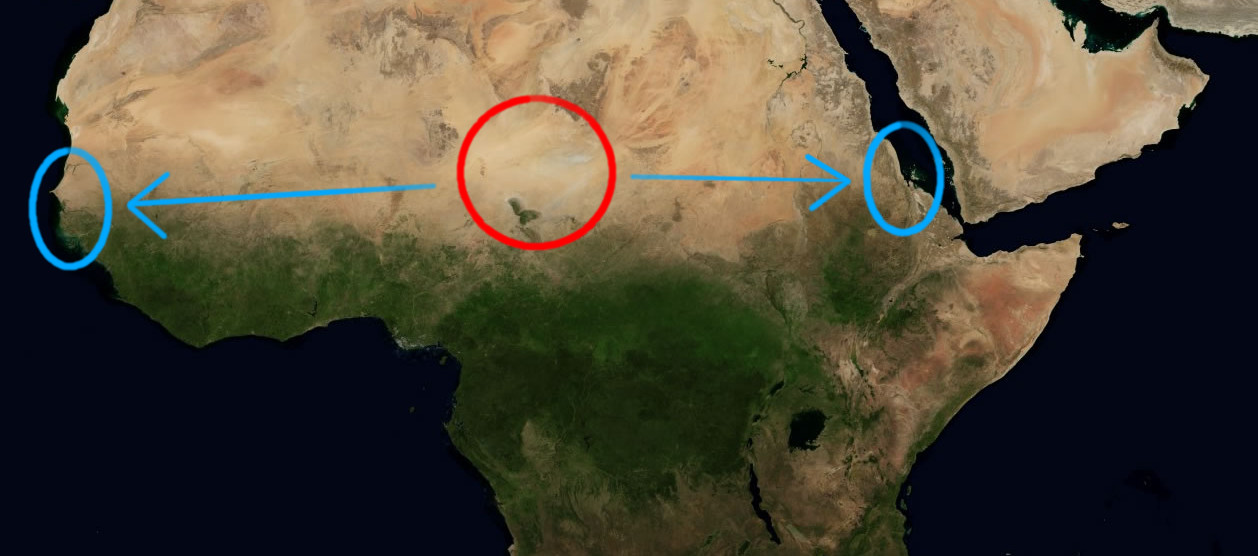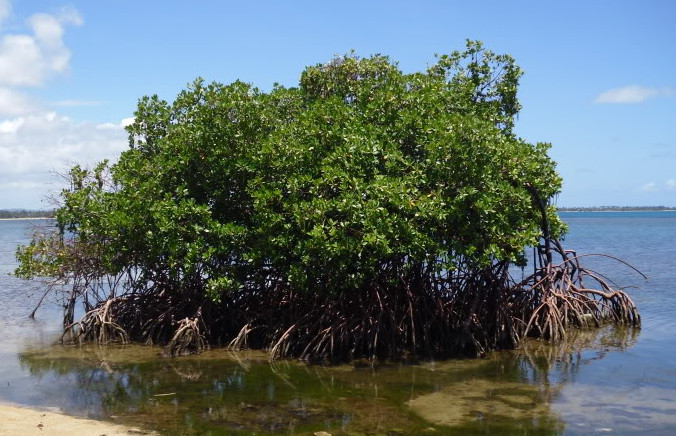To find out what kind of vegetation to expect around the prehistoric lake Mega-Chad, circa 7 million years ago, we would do best to go there and dig up the soil layers and identify the specific plants that grew there. As far as I know this has not yet been done. So until then, the best I imagine we can do is to infer what kind of plants should have grown there, from other evidence.
To do this we first realise that 7 million years is not a very long time in evolutionary terms. So we should expect plants that are quite similar to the ones we have today. Not identical but strongly similar. Specifically, since Mega-Chad was a huge intermittently flooding brime (mix of saltwater and freshwater) lake, we should look at what plants grow in similar latitudes (straight to the east and west) at similar environments. If there are any! And then we should be quite sure that the plants that grew at paleolake Mega-Chad were at least strongly related to them.
Similar locations
In fact we are so lucky that it just so happens that we do have that specific environment to both the east and the west – at the coasts! In the marshy deltas of Senegal to the west, and the archipelago of Eritrea to the east. At both places we have a wet environment, an intermittent mixture of saltwater and freshwater, periodically flooding. These locations receive the same amount of rainfall and the same amount of sunlight as the ancient lake would have.

So we just need to list what kinds of plants grows there. There are some low bushes…. and mangrove trees. Lots and lots of mangrove trees. But only in specific locations. Those locations that have intermittently saltwater and freshwater. In those locations the mangroves dominate. But at places with permanent seawater mangroves do not grow at all.
I judge this evidence to strongly indicate that the shores around paleolake Mega-Chad to have been littered with mangrove trees. The kind that would survive intermittent flooding, with a low laying saltwater brime at ebbs, and a high of almost pure freshwater at floods. The floods would sway about 0,5 to 1,0 meters between highs and lows. A species of mangrove that would survive this would be standing on stilt-looking roots that would be about 1 meter tall from lake bottom before uniting at the base of a stem on average 0,5 meters above the water surface.
A habitat
The roots from a mangrove tree start out almost horizontal from the trunk, producing a nice footrest for you to step on if you put your foot right next to the trunk and hold on to the trunk with your hand. The roots would gently curve down into the water. Where many trees grow next to each other their roots would interlock about 0,2 – 0,3 meters above the water surface on average, producing kind of sparsely webbed floor.

If a bunch of trunks grow near each other the result would quite often be a kind of pocket between the roots that you almost could sit in. Not always but reasonably often you would be able to find such a pocket that only needs a few extra branches, twigs and leaves put into it before you have a rather nice place to sleep in.
This sleeping-pocket would be safe from crocodiles, as it is above the water surface and you are protected by a cage of wood. It would also be safe from sabretooth cats (the other main predator of the area) because they are unable to nimbly climb across the floor of roots without risking falling into the water. And they wouldn’t go into the water because of all the crocodiles. Aside from the cats and the crocodiles there are no other large predators hunting small apes in this area. Thus the mangrove sleeping-pockets would be a very safe place to sleep for a small ape.
